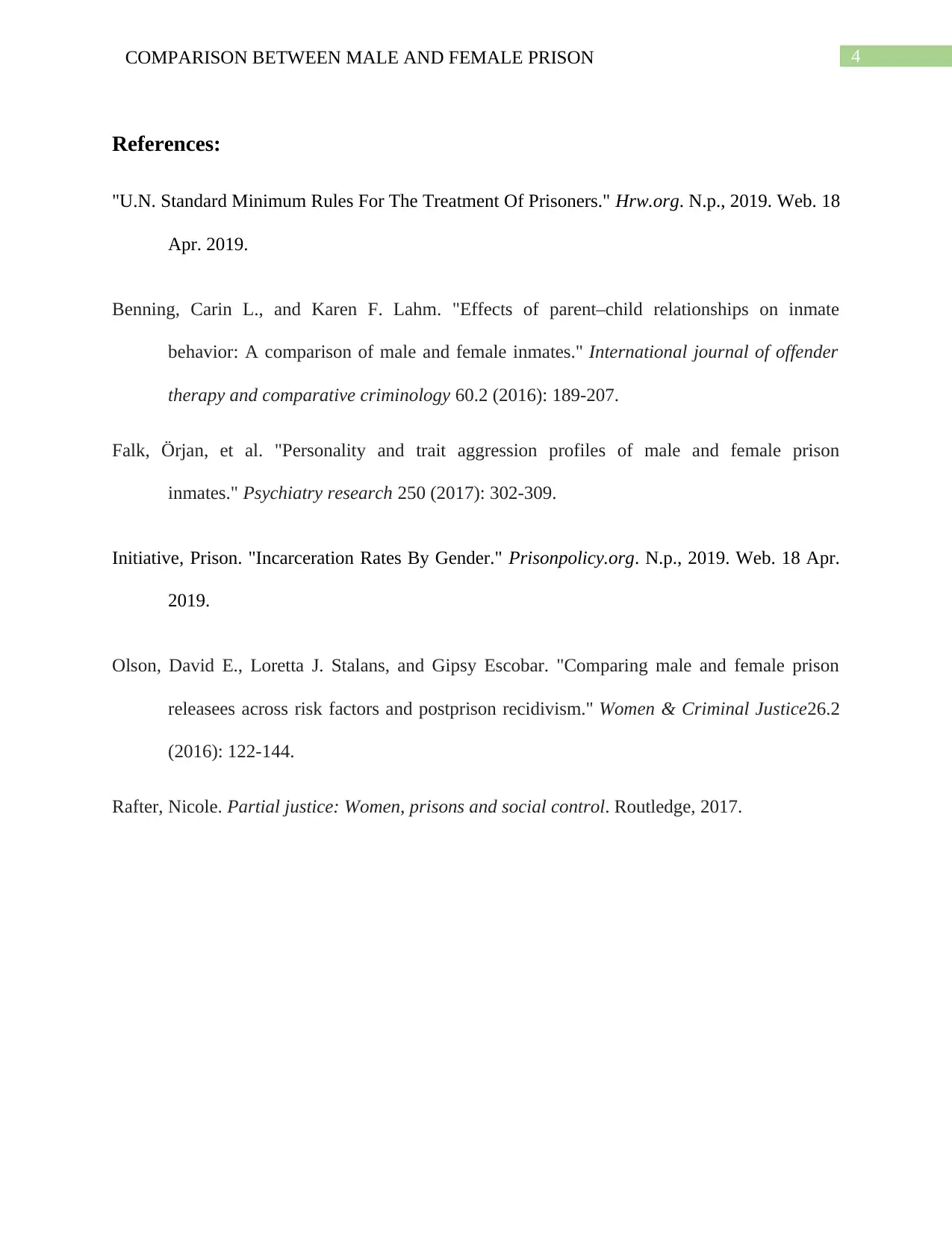Detailed Comparison: Living Standards in Male and Female Prisons
VerifiedAdded on 2023/01/20
|5
|1064
|37
Essay
AI Summary
This essay delves into the differences between male and female prisons, exploring various aspects of prison life. It begins by highlighting the disparities in incarceration rates between genders, setting the stage for an examination of the varying living standards. The essay discusses mortality rates, health needs, and the physical environments of male and female prisons. It references the United Nations Standard Minimum Rules for the Treatment of Prisoners, emphasizing the need for gender-specific accommodations, such as prenatal and postnatal care for women. Security protocols, including restrictions on male personnel in women's prisons, are also compared. The essay concludes by attributing these differences to perceived gender differences and the varying nature of crimes committed by each gender, suggesting that correctional institutions are often structured to reflect these perceptions and offer different opportunities for rehabilitation.
1 out of 5











![[object Object]](/_next/static/media/star-bottom.7253800d.svg)